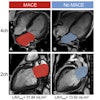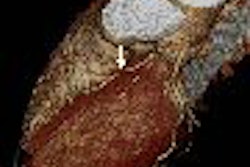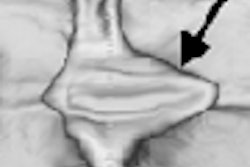(Radiology Review) For evaluating pancreatic adenocarcinoma using triple-phase multidetector-row CT (MDCT), a combination of pancreatic parenchymal and portal venous phase imaging is essential and appropriate, according to radiologists at Yamanashi University in Shimokato, Japan.
They evaluated arterial, pancreatic parenchymal, and portal venous phase images, as well as coronal and sagittal multiplanar reformatted (MPR) images to determine the best image sets for detecting pancreatic adenocarcinoma.
Tumour detection and local extension were carefully evaluated by Dr. Tomoaki Ichikawa and colleagues for this study published in the American Journal of Roentgenology (December 2006, Vol. 187:6, pp. 1513-1520).
During a 17-month period, 31 patients had surgery for pancreatic adenocarcinoma and all had preoperative multiphasic contrast-enhanced MDCT. Thirty-five patients without pancreatic adenocarcinoma also had multiphasic contrast-enhanced MDCT.
Researchers evaluated serosal and retroperitoneal peripancreatic extension, and choledochal and duodenal invasion. "Regional lymph nodes with a short-axis diameter of greater than 10 mm were considered positive for involvement," they wrote.
For this study, the radiologists diagnosed pancreatic carcinoma when a hypoattenuating lesion with diminished enhancement relative to the normal peripheral pancreatic parenchyma was shown on MDCT.
Results showed that coronal and sagittal MPR images and axial images, obtained in all phases, had the highest sensitivity (93.5%) compared with other image sets. The arterial phase image set showed the lowest sensitivity (80.6%).
"Coronal and sagittal MPR images and axial images obtained in all phases yielded the highest kappa values for all local extension factors evaluated; the image set composed of only arterial phase images yielded the lowest kappa values for almost all of the factors," the authors wrote.
A combination of pancreatic parenchymal phase and portal venous phase imaging provided the highest sensitivity for pancreatic adenocarcinoma (presence and extension), they concluded. "The addition of coronal and sagittal MPR images increased the performance of MDCT, especially in the evaluation of local extension," the authors stated.
"MDCT of Pancreatic Adenocarcinoma: Optimal Imaging Phases and Multiplanar Reformatted Imaging"
Tomoaki Ichikawa et al
Sukru Mehmet Erturk, Department of Radiology, Brigham and Women's Hospital, Harvard Medical School, Boston, MA 02120, USA
AJR 2006, December; 187:1513-1520
By Radiology Review
January 4, 2007
Copyright © 2007 AuntMinnie.com



















